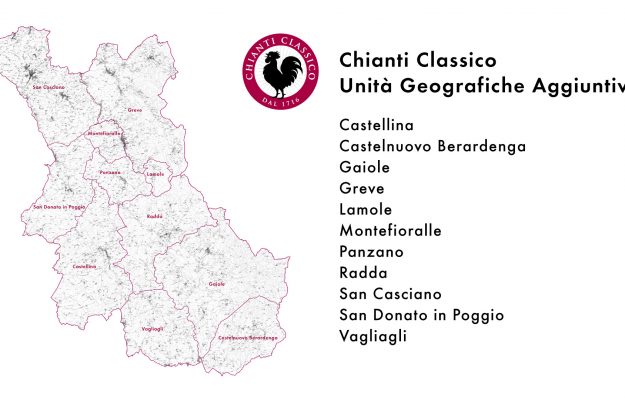As promised at the “Chianti Classico Collection” in February 2023, as of July 1, the 11 Additional Geographical Units (San Casciano, Montefioralle, Panzano, San Donato in Poggio, Castellina, Vagliagli, Greve, Lamole, Radda, Gaiole and Castelnuovo Berardenga) will be allowed to be used in the labels of the “Gran Selezione”, the qualitative summit of the Gallo Nero, which, moreover, sees Sangiovese increase from 80% to a minimum of 90% of its ampelographic base, which may be supplemented by a maximum of 10% of other allowed native grape varieties. So much, in fact, the changes to the Chianti Classico regulations, approved and published in the Official Gazette on July 1, 2023, provide.
“This is a historic milestone for the denomination”, says the president of the Chianti Classico Consortium, Giovanni Manetti, “and now all consumers will finally be able to choose wines from the different Uga and appreciate the nuances of the Black Rooster territory: a further step toward enhancing the distinctive characteristics of Chianti Classico”.
Queen appellation of the wine of Tuscany, with 7,000 hectares of vineyards and an average annual production of between 35 and 38 million bottles that go to 160 countries around the world, with the USA, Italy and Canada in the lead, and an economic district that, with wine as the pivot around which oil, quality agriculture, catering, hospitality and more revolve, moves an estimated turnover of around 1 billion euros. And which is now also aiming for recognition as a Unesco Heritage Site for “the system of Villas-Farms in Chianti Classico”.
Copyright © 2000/2025
Contatti: info@winenews.it
Seguici anche su Twitter: @WineNewsIt
Seguici anche su Facebook: @winenewsit
Questo articolo è tratto dall'archivio di WineNews - Tutti i diritti riservati - Copyright © 2000/2025









































































































































































































